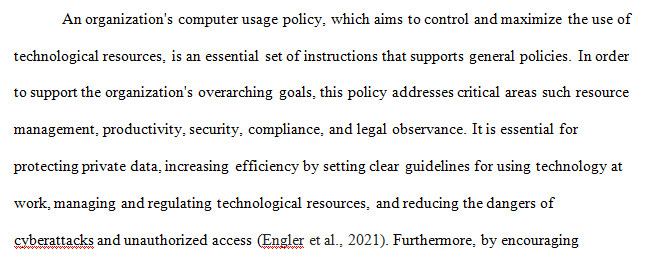There are many good and appropriate uses for technology, but not all such uses are appropriate or helpful for an organization. In the Bible it says, “So, whether you eat or drink or whatever you do, do all to the glory of God” (1 Cor. 10:23). Computer usage policy is not meant to supersede the organization’s general policies, but rather to complement them.
Therefore, based upon this week’s topics and research, create a general computer usage policy for your corporation, keeping in mind that being able to use a computer is a privilege, not a right, and this privilege comes with personal responsibility.
-
- Additionally, create a set of recommendations for group policy settings by analyzing the implications of Christian worldview in light of human value and dignity.
- Your final policy should be 500-750 words in length.
While APA style is not required for the body of this assignment, solid academic writing is expected, and documentation of sources should be presented using APA formatting guidelines, which can be found in the APA Style Guide, located in the Student Success Center.
This assignment uses a rubric. Please review the rubric prior to beginning the assignment to become familiar with the expectations for successful completion.
You are required to submit this assignment to LopesWrite. A link to the LopesWrite technical support articles is located in Class Resources if you need assistance.
Answer Preview: Corporate Proposal IV: Computer Usage and Restriction Policies
